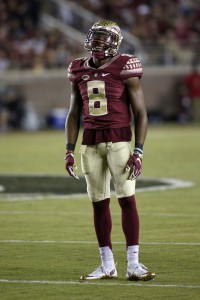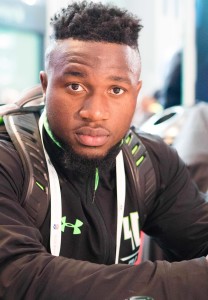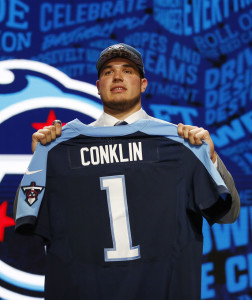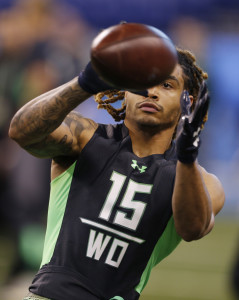The old adage that defense wins championships may or may not be true, but you’ll be hard-pressed to find a title-winning team that didn’t build heavily through the draft. Rookie classes, naturally, are evaluated on the perceived upside of the NFL newcomers, but which rookies are ready to contribute right out of the gate? And, how do they fit in with their new team schematically?
To help us forecast the immediate future of these NFL neophytes, we enlisted the help of draft guru Dave-Te Thomas who has served as a scouting personnel consultant to NFL teams for multiple decades.
Today, we continue PFR’s Impact Rookie series with his insight on the Jacksonville Jaguars’ draft class:
Patience and an unlimited bank account by team ownership might just be the tickets to get the Jaguars into the playoff picture in 2016. If not, heads are certain to roll, both in the front office and on the field. The maturation of quarterback Blake Bortles, along with the emergence of receivers Allen Robinson and Allen Hurns, gives Jacksonville formidable aerial weapons. The addition of former Jets tailback Chris Ivory gives the team a solid 1-2 punch in the backfield, as the newcomer is expected to split time with T.J. Yeldon.
The defense received the bulk of the front office’s attention via the free agent market. Denver’s Malik Jackson was brought on board to join injured 2014 first-round talent Dante Fowler, drastically upgrading the team’s pass rush. Toss in free safety Tashaun Gipson leading a revamped secondary and you can see that coordinator Todd Wash had enough weapons on hand even before the cache of talent the team snatched during the draft.
Jacksonville failed to address their primary need – offensive line – spending six of their seven draft selections on defensive talent. Still, you can envision at least two future All-Pros (Jalen Ramsey and Myles Jack) to hopefully emerge from this crop. The rest of the defensive selections were taken with one task in mind – attack the pocket and get to the quarterback.
First Round – Jalen Ramsey, DB (Florida State, No. 5 overall)
The Jags wasted little time running up to the podium with Ramsey’s name on the card handed to the commissioner. Many had figured Ramsey, the best athlete in the draft, would be taken by the Chargers at No. 3 to help ease the loss of Eric Weddle. Ramsey may have slipped past the Chargers and Cowboys due to some minor knee issues and, as it turns out, that injury did pop up during Jacksonville’s rookie camp. 
Still, to find Ramsey on the board with the fifth pick was a blessing. The addition of Gipson via veteran free agency will see Ramsey remain a cornerback, at least at the start of his NFL career. He’s already listed as their starting right cornerback, leaving former starters Dwayne Gratz and Aaron Colvin as caddies for Ramsey and Davon House. Both former starters will also have to contend for a roster spot, as the team also inked former Giants first rounder, Prince Amukamara, to a one-year deal. Additionally, the team seems enamored with versatile Nick Marshall, a former college passer making the conversion to the secondary.
Second Round – Myles Jack, LB (UCLA, No. 36 overall)
If Jacksonville was fast to get to the podium with the Ramsey card, they were at warp speed when it came to Myles Jack. Medical reports are split on Jack as some say the injured star is 90% ready to contribute while others indicate that he could have a short-lived career due to his knee issues. Perhaps the Jags felt that Jack was just too good to pass up, even if it is for the short term.
If Jack’s knee is able to withstand the rigors of NFL life, he could be the team’s playmaker at strong-side linebacker. Recent off-field issues for current starter Dan Skuta put the veteran in a precarious situation, but even on his best day, he could not compare to Jack at his worst. Skuta ranked eighth on the team with 40 tackles in 2015 and his 1.5 sacks are easily replaced. Skuta’s roster spot could be in further peril, thanks to the drafting of Yannick Ngakoue and Tyrone Holmes (more on them in a bit). Outside of Telvin Smith, look for the linebacker unit to undergo a transformation this year, with middle linebacker Paul Posluszny possibly holding on to that spot one more year before Jack could be asked to shift inside in 2017.




